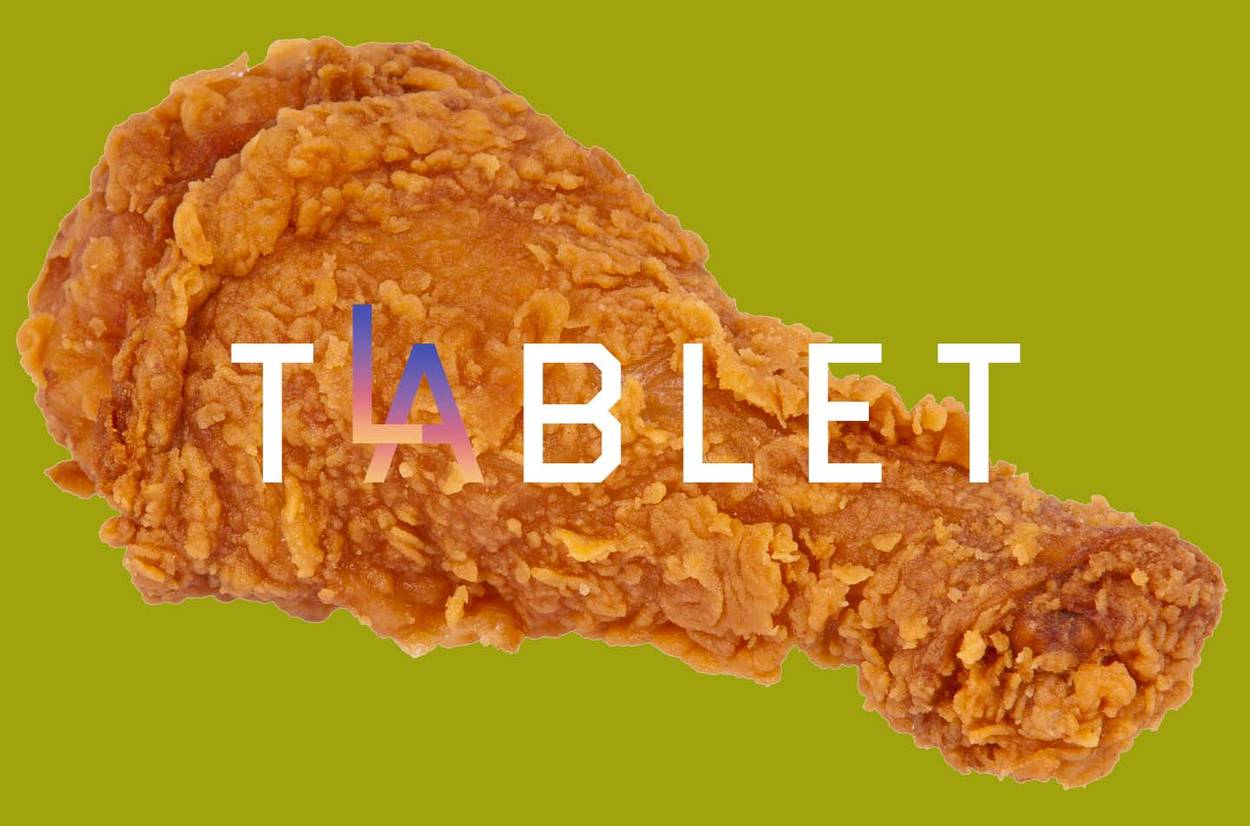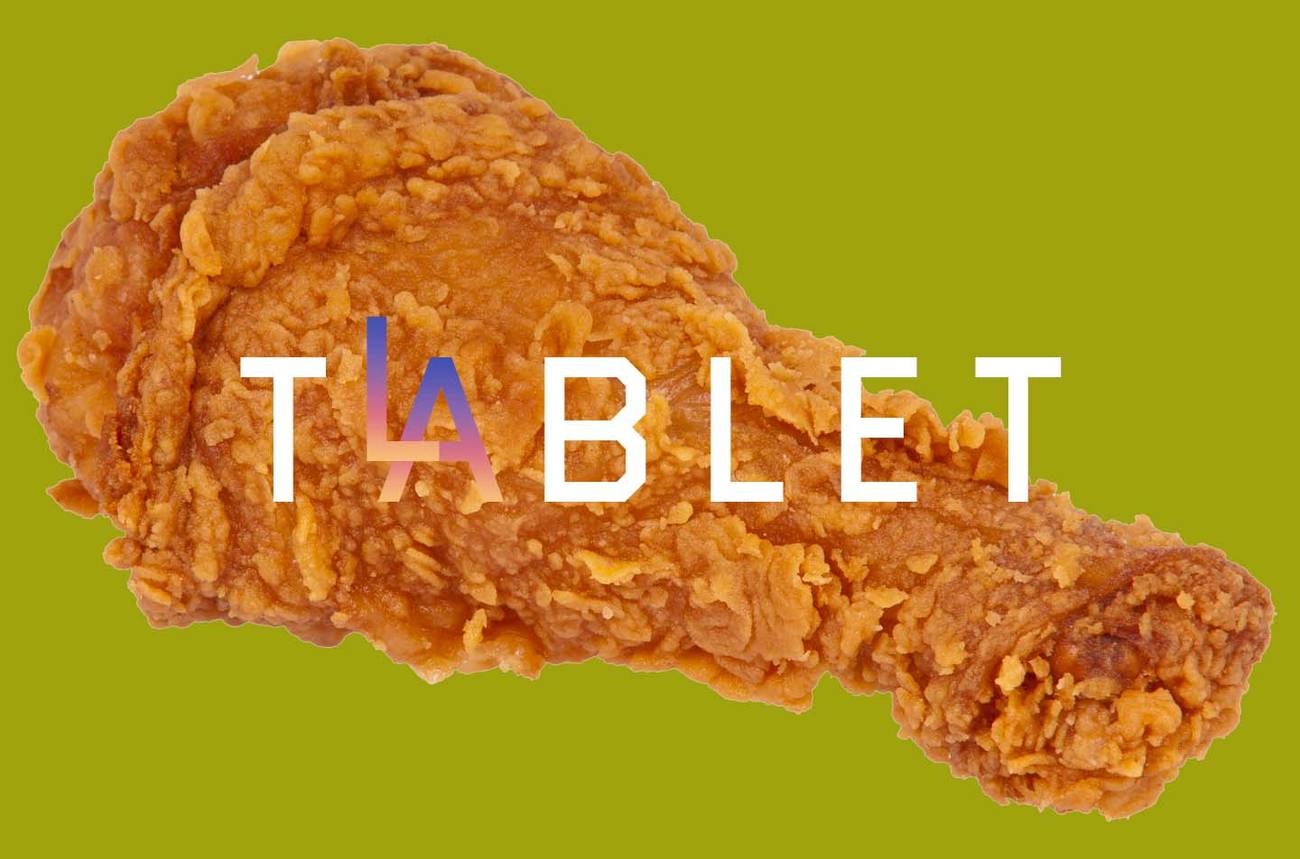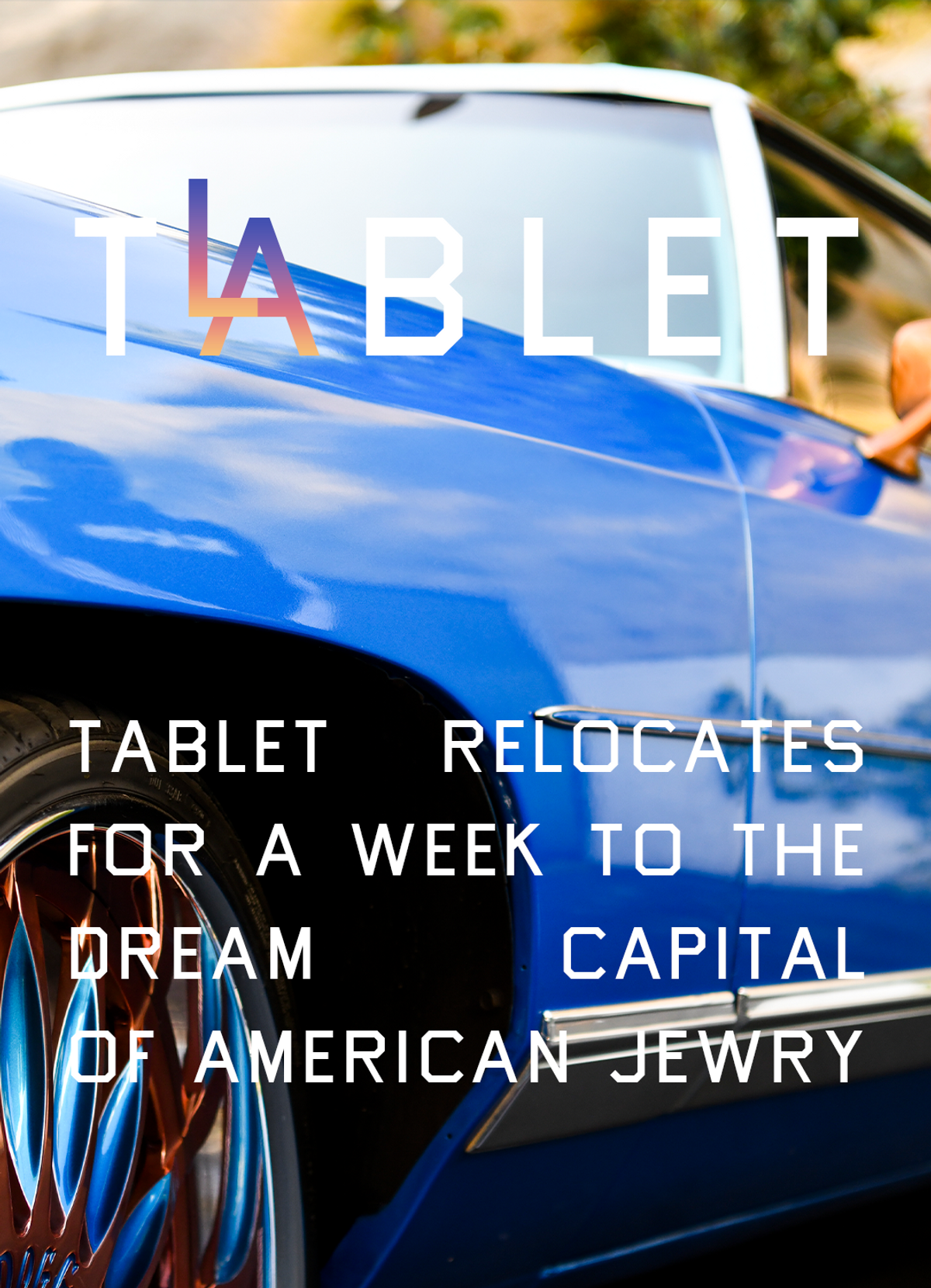The Road to Munchies
In search of Pico-Roberston’s teen nightlife scene




George Washington’s promise to the Jews of Newport, Rhode Island, that “the children of the Stock of Abraham, who dwell in this land, continue to merit and enjoy the good will of the other Inhabitants,” is kept alive at Schnitzly, a late-night chicken joint where the religiously observant Jewish youth of Los Angeles gather on Saturday night.
Schnitzly is located on the main drag of the Pico-Robertson section of town, where the European Jewish refugees settled after World War II, followed by the Iranian Jews, shifting the center of Jewish life in Los Angeles from Boyle Heights, on the east side, to the west. The city’s main Jewish commercial zone stretches along West Pico from La Cienega Boulevard to Beverwil Drive, about a mile and a half of bakeries, kosher markets, watch shops, Judaica stores, event halls, and restaurants with names that get more and more spectacular as you walk east. There’s Holy Grill, Meshuga 4 Sushi, Lenny’s Casita—which has a kosher crunch-wrap supreme to rival Taco Bell’s for stoner bochers who won’t touch the treyf stuff—Got Kosher, Kosher Pizza Station, and Schnitzly, the motzei shabbos watering hole, to name a few.
I enlisted the help of my college buddy Sammy, a perennial campaign staffer who grew up in nearby Cheviot Hills and just moved back from Boston to Pico-Robertson to be my tour guide. Sammy is an alum of Sinai and Milken, two of the city’s big Jewish day schools, and currently an outfielder on the Sinai Sluggers softball team, part of the city’s Synagogue Softball League, which according to their website was established in 5755. We have gloriously gross Chinese food at Fu’s Palace, then walk the boulevard.
There’s a big mural on the corner of Pico and Wetherly that gets edited every week telling the community when to light Shabbat candles. This week, it was 5:09 p.m. Taking up the two blocks between Doheny and Cardiff on Pico is a Pacific Coast Energy oil rig; 40 wells and an oil derrick hidden just beneath a huge beige structure made to look like a synagogue facade. We pass the glatt kosher grocery store where the owner got busted in 2013 for selling nonkosher meat. We take a minute to mourn the loss of Label’s Table, a shuttered deli that, according to its faded sign, featured “Russak’s premium gold brand cured and smoked products,” which sound deluxe.
On the sidewalk across from Young Israel of Century City we meet two homeless people, Jenny, 37, from Illinois and Scott, 52, from Utah, who have spent the past six nights sleeping against the wall of Ahavat Shalom, another Orthodox synagogue. They have a tray of vegetables, mainly green peppers and tomatoes that they scored dumpster-diving. I want to drop dead after pointing to it and asking, “So is this like the kitchen area?”

Scott and Jenny like LA’s West Hollywood neighborhood best, and that’s where they met, in the food line, the night Trump was elected, but cops don’t come by as often on Pico. “Everything has been weirder since Trump won,” says Jenny. “Half the country is looking for something that’s not there, and the other half is just going along.”
Scott says that his grandfather, David “Ernie” Perkins, fought in the 45th Infantry Division, and liberated Dachau, and he took pictures of what he saw there, but Scott never saw the pictures. “People on the streets are crazy,” Jenny tells me from his perch on a mattress, “We avoid them at all costs.”
Among Scott and Jenny’s possessions is a playbill for Summer: The Donna Summer Musical at Pantages Theatre on Hollywood and Vine, a box of cigarette butts, and a makeshift lantern made from an empty gallon of Arizona Iced Tea and a flashlight. Behind Jenny is a guitar case full of clean clothes, and they each have a grocery cart festooned with American flags and foil streamers, and an overflow of filthy blankets, to pack it all up in.
Scott is visibly tweaking, and even though Sammy is “not remotely afraid of people who are currently experiencing homelessness” he is quite obviously spooked. So we hand over the leftover Chinese and reroute our night from housing crisis to identity crisis. At Schnitzly, two blocks away, we find a comforting gaggle of 16-year-olds congressing over the remains of orders of onion rings and plastic condiment cups of ketchup and Russian dressing under a picture of the Rebbe. There are eight high schoolers, all of whom are Persian except one girl whose parents are from Ukraine. They mostly go to Milken Community School, the reform day school where Sammy went. Two go to Santa Monica College.
There’s a popular hack among the Persian crowd where they get their GED at 16, then enroll for two years at SMC, a community college, before transferring to UCLA. By 20, they’ve saved their parents a fortune and earned themselves a degree with a world-class label.
They tell me about the play they just finished reading in school, A Streetcar Named Desire; “It’s about this girl who goes and stays with her sister’s husband’s family. They used to own a place and have a lot of money but now for some reason they don’t have money anymore”; about the best place to grow up, “Texas or Florida”; and the best Drake Song, “HYFR” (Hell Ya Fucking Right) from his album Take Care.
At Milken, I’m told by Chloe, a tiny girl in a gray sweatshirt and leggings, 90% of the students are done with COVID and masks. But it’s the 10%, the girls, “who wear miniskirts with thigh-high socks and high boots and they just sit in the corner all day and never get written up for breaking dress code,” they’re ruining it for everyone by demanding that the masks stay on, indoors and out. The teachers have to wear N95s. These kids’ freshman year was held entirely online, their sophomore year was half-online, and half in Israel, on a program called Tiferet Israel Fellowship. Now they’re back in school, albeit with masks.
A group of boys from Shalhevet, a more religious school, walk in. They have Yeezy Boosts and Jordans and Air Force 1’s, hoodies and tzitzit.
A group of boys from Shalhevet, a more religious school, walk in. They’re tall and skinny with huge feet; they have Yeezy Boosts and Jordans and Air Force 1’s, hoodies and tzitzit.
Now it’s time for the kids to go, but Dazed and Confused style, they don’t really know where. There’s nothing to do. They’ll drive around, maybe past the party their friend is having but that they didn’t get invited to because “there wasn’t enough room.” They roll their eyes. They don’t come here every Saturday night, not even close. They haven’t been in weeks! But, sometimes, they tell me, you have to break up the pizza dinners and the pastas and the salads with a platter of fries and chicken fingers, for old time’s sake.
Sammy and I end the night at Munchies, the “Largest Kosher Candy & Chocolate Selection West of New York.” The glatt kosher candy emporium is lit like a Costco. It’s run by a band of 12- and 13-year-olds who dispense soft serve, Pesek Zman chocolate bars from Israel, and kosher gummies in every color and shape you can possibly imagine. They also sell frum magazine titles (Ami, Binah, and Mishpacha) as well as newspapers (Hamodia, Jewish Press, and Yated Ne’eman).
The crowd at Munchies is younger and more religious. The girls, who are mostly Ashkenazi, have flip phones, and wear thick, black, wool pleated skirts. Their whole torsos are prone against the shop’s small circular steel tables as they crane their necks toward the screens of the one or two smartphones present. They have scrunchies in their hair and wear flats; knockoff Gucci mules and slip-on Keds. They go to Beis Yaakov and Torat Emes.
George Washington would be proud, if sort of mystified, by Munchies, as well as by Fred Segal and everything else about Los Angeles. But Sammy is done for the night. “There’s something about this place that makes me feel incredibly Jewish,” he says, “And at the same time not nearly Jewish enough.”
Suzy Weiss is a reporter for Common Sense.